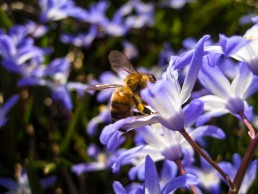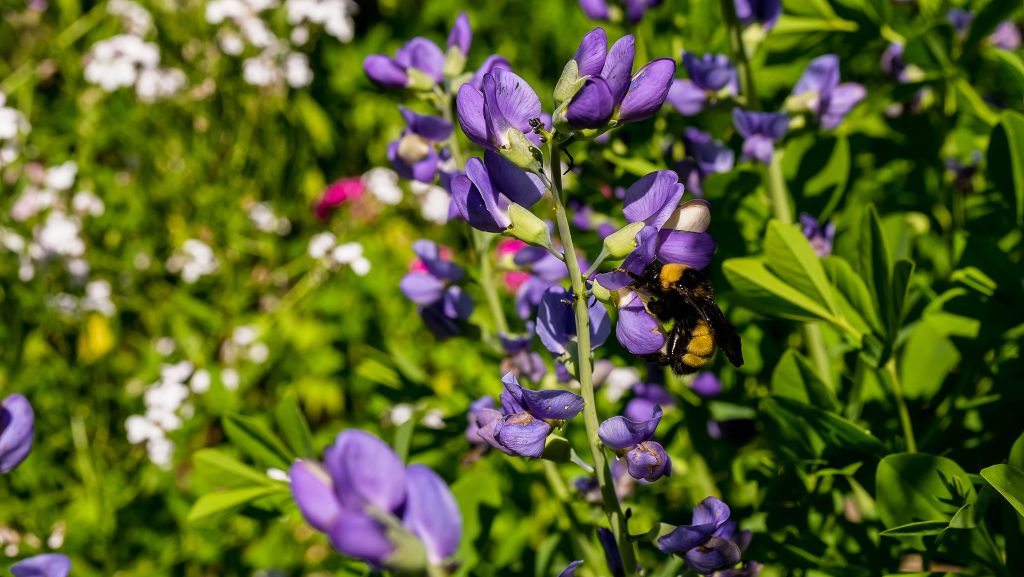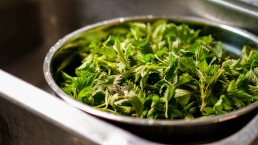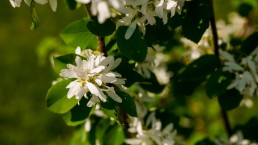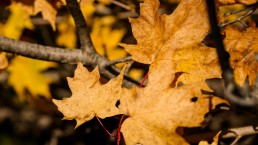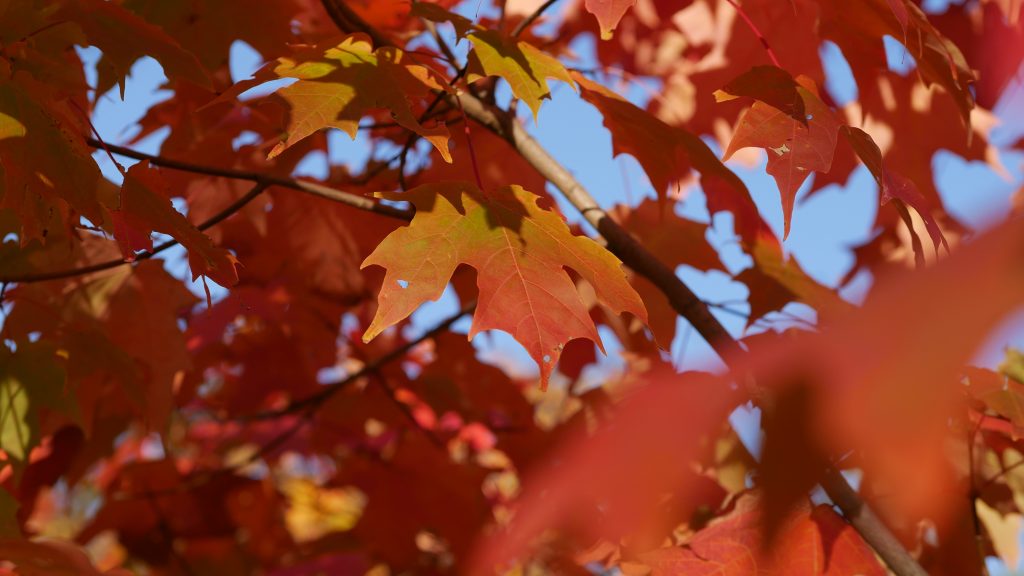The Hum of the Honeybee
Welcoming Spring
With Spring just around the corner, I can hardly wait to hear the songs of birds and the hum of the bees, both distant memories, yet sweet melodies to my ears. Living in Southern Ontario, even with the Spring Equinox only a couple of weeks away, it’s hard to imagine the sight of green, replacing the three feet of snow that still surrounds us. However, it’s during these colder months that I sit back and reflect on the early days of Spring where I can watch the world awaken yet again.
I often consider myself grateful to be a beekeeper, getting the chance to bear witness to the intimate life of a honeybee and a hive so full of life. That is, of course, only if we’re lucky enough to have them survive the winter. It is not uncommon for me to lose time in front of our hive, and I often think being around them on a busy midsummer’s day takes the busyness out of my mind.
If you sit with them long enough, they can become your teachers, as they have been for me. They have taught me how interconnected everything is, how far hard work can take you, and that a helping hand can go a longer way than the eye can see. One could argue they are selfless creatures, always putting the welfare of others before that of their own.
Becoming a Beekeeper
It happened by chance, as my partner and I inherited our colony with our first home. Though unplanned, this opportunity took me down a path of understanding on a deeper level where our food comes from, and how much different our world would look without our honeybees. They are a vital part of every ecosystem, among the many other invaluable pollinators that often go unnoticed.
It is said that one third of the food we know wouldn’t exist if it weren’t for our honeybees. Though it’s hard to miss something before it’s gone, I urge you to imagine a life without the delicious crunch of an almond, or the sweet pop of a fresh blueberry on a hot summer day – two of the many foods that surely we’d miss long after they’re gone.
Paying it Forward
With that, I encourage you to pay it forward, as the bees so humbly do for us, working hard all season long to bring us so many of the foods we love, medicine that we rely on, and a habitable and colourful landscape to live in.
In the end, supporting the livelihood of our bees supports that of our own, and there are so many ways to make a difference. Here are a number of ways that you can give back to the bees, keeping in mind that small actions have big impacts – just as the bees teach us:
1. Let your lawn go.
I always like to start by suggesting this one, as it requires no work but goes a long way. Letting any amount of land return to the wild encourages biodiversity and increases the likelihood of wildflowers to blow in and bloom, thus giving your bees more food for their post-hibernation hungry bellies. Trust me, the bees will thank you (and in my opinion, it’s far more beautiful).
2. Plant native wildflowers.
It’s hard to argue the beauty of a meadow abundant with blooming wildflowers, so find out which are local to you, and spread those seeds! This can also be a great opportunity to plant endangered natives species and support those at risk.
3. Avoid spraying.
Keeping things pesticide-free is a great way to avoid harmful chemicals, like glyphosate which wreaks havoc on the bees. Instead opt for more organic and natural solutions!
4. Support your local beekeepers.
Smaller scale beekeepers often have less demands to meet, thus more room to prioritize the health of their honeybees. This is a great way to support your local food systems and can go a long way for those suffering from seasonal allergies.
5. Giving bees trees.
Trees often get overlooked when we think about providing for the bees, but they’re a great source of nectar and provide them habitats, especially in the midst of continuous deforestation and development. Some trees, like Willows and Maples, make up some of the first food sources for them in the early days of Spring.
6. Choose wisely.
I like to say, if it comes in a squeeze bottle, it’s not the honey you want. This kind of honey is often pasteurized (a sterilization process that heats up the honey, thereby losing medicinal value) and contains fillers like corn syrup. Instead you can look for raw, unpasteurized honey – which is both better for you, and the environment.
Photos provided by Serena Mor
Cooking with Herbs: Stinging Nettle Soup
Recipe
- 1 lb/450 g or more of Stinging Nettles (young tender shoots preferably harvested in early spring)
- 1 tsp salt
- 1 tbsp olive oil
- 1 onion
- 1/2 cup uncooked basmati rice
- 8 cups vegetable broth stock (or use 2 organic vegetable bouillon cubes)
- More salt and pepper to taste
- Garnish: cashew nut cream or regular cream (optional)
Method
1) Wearing latex/rubber gloves sort out the harvested stinging nettles and remove any thick stems.

2) Wash the stinging nettles and drain.
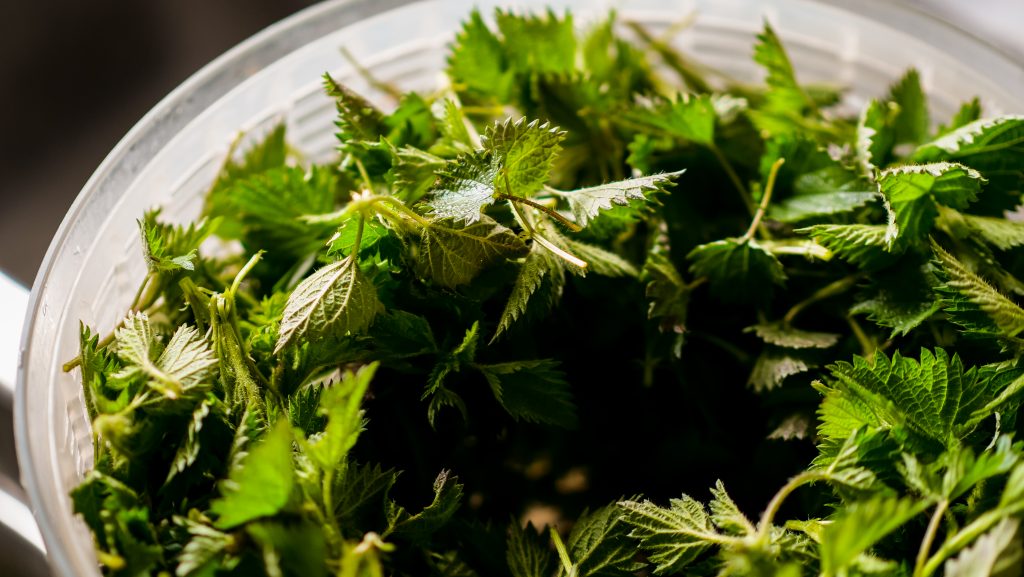
3) Bring a large pot of water to a boil with 1 tsp of salt added. Blanch the stinging nettles in the boiling water for about 2 minutes. This will remove the sting so you can chop it.
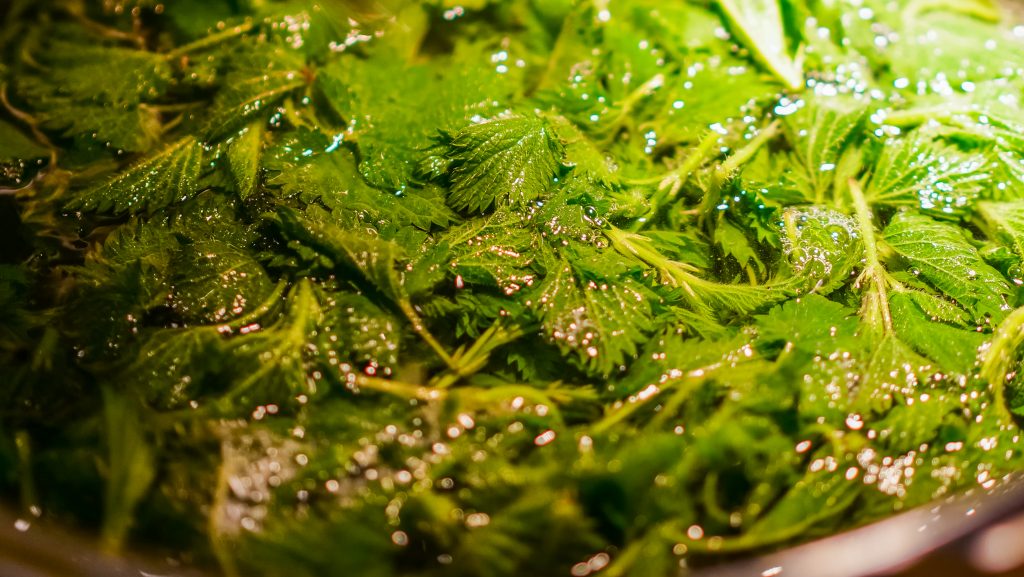
Use a large spoon strainer to remove nettles from the pot. Put them in a colander and run cold water over it to cool it down.
Do not drain the nettle water, reserve it to make your vegetable stock broth.
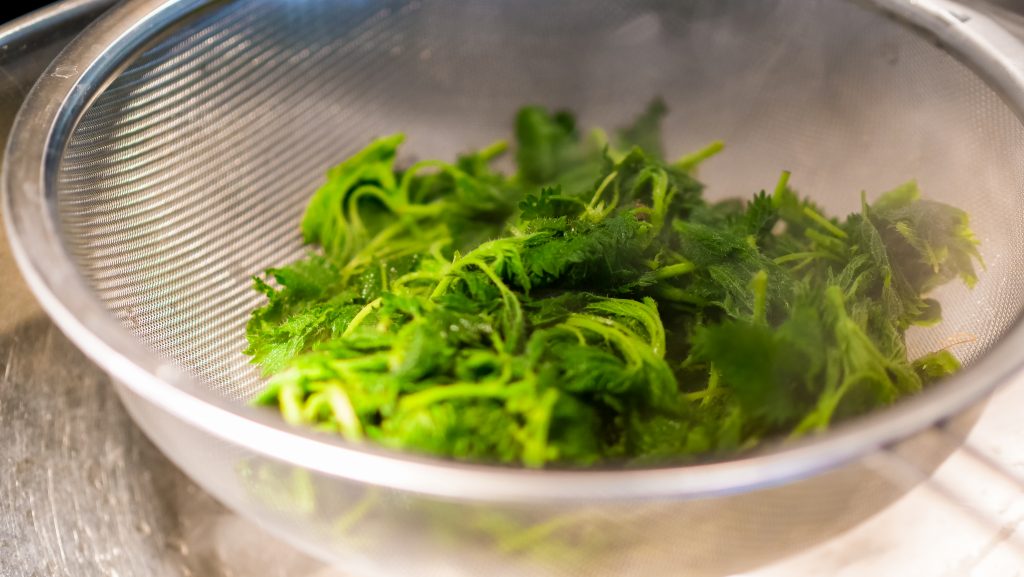
4) Fry a chopped onion in the pot. Add the reserved nettle water along with two stock cubes.
Bring to a boil and add the rinsed basmati rice. Always rinse your basmati rice a few times with water until the water is clear.
Add rice to the pot and simmer for 8-10 minutes.
5) Now add the chopped stinging nettles. Simmer for about 5 minutes, do not overcook this nutritious pot herb. Add ground black pepper to taste. You may not need to add more salt.
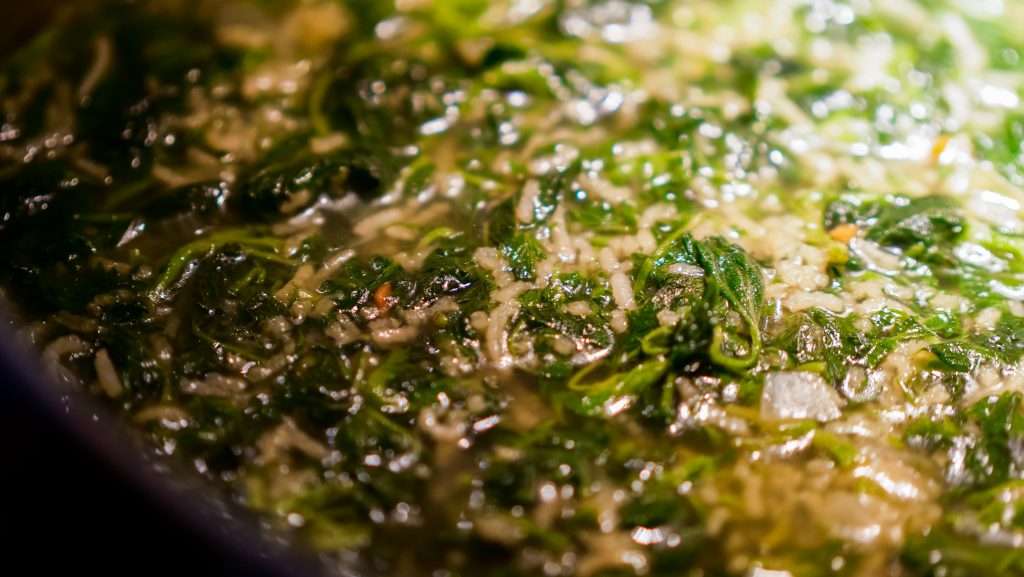
6) Turn off the heat. Using an immersion blender puree the soup. You can enjoy this soup with or without cream served in the bowl.
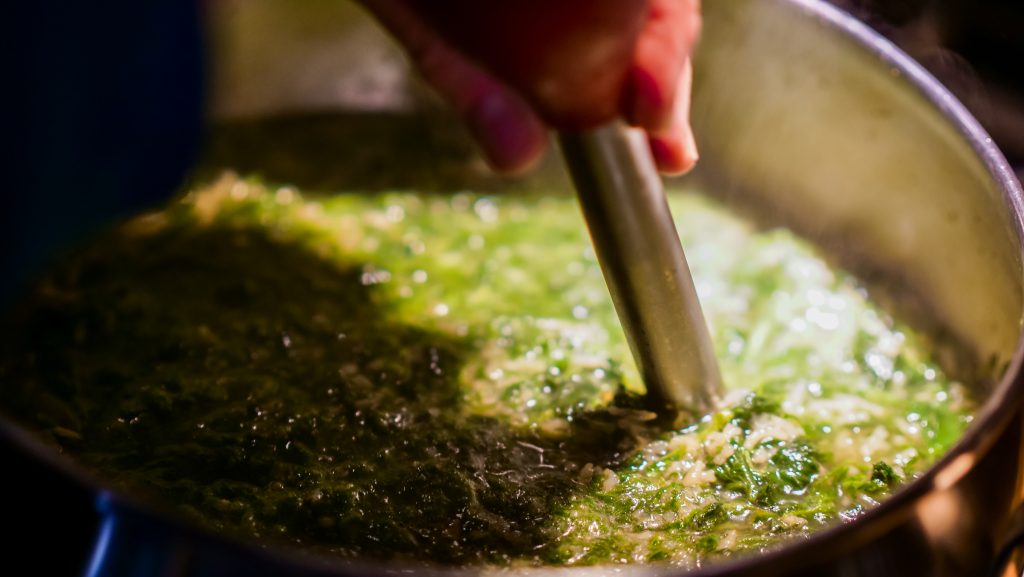
Enjoy!
– Recipe contributed by Karin M
Did You Know?
- The botanical name for Stinging Nettle is Urtica Diocia
- Nettles are a Nutritive (a class of plants that are rich in vitamins and minerals; a source of easily assimilated nutrients. Ideal for those suffering with anemia.)
- Cooked nettles are both salty and sweet. The stronger, salty flavor indicates the high level of minerals and the sweet flavor encompasses elements that build up tissues and strengthen the body.
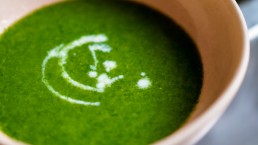
Preparing for Allergy Season
Spring is Almost Here!
Now is the perfect time to get a jump-start on your seasonal allergies! Stinging Nettle season will be soon upon us and we can make great use of this amazing herb and some honey from our own cupboards. First, some information on allergies, the herbs and nutritional supplements to aid allergy sufferers, tincture formulas and nettle soup recipes. For more information on Stinging Nettle, we’ll be posting a Materia medica soon!.
The Gut and Allergy Connection
All of the symptoms associated with allergies are signs of inflammation: redness, swelling, and itching. To help get rid of allergies, you have to get rid of inflammation and hyper-reactivity. The place to start is in your gut.
One of the major jobs of your digestive system is to provide an interface between the external world (foods, allergens, bacteria, etc.) and your blood stream. It does this in the stomach by using natural digestive acids to break down potentially allergenic proteins and in the intestines via a layer of barrier cells that prevents these proteins from getting into your blood stream. You also have a whole host of special bacteria in your gut, as well as immune cells, whose job it is to break down and get rid of proteins and other molecules that can cause you to get sensitized to them, leading to gut – and systemic – inflammation.
How to restore your gut:
- Clean Up Your Diet – Remember to eat lots of fresh vegetables, fruits, seed and nuts. Eliminate sugar, soda, preservatives, additives, dyes and other non-food junk, and drastically decrease dairy intake (yes, if you want your allergies to go away forever, you will have to do this – sorry). Part of cleaning up your diet is to eat foods with as few chemicals and additives as possible. I highly recommend buying organic or visiting your local farmers market.
- Heal Your Gut
- This is done with an Elimination Diet. An elimination diet is 2 weeks of eating a simple diet from which you have removed the most common food triggers including gluten, sugar, dairy, eggs, soy, coffee, soda, and artificial ingredients – as well as anything you typically crave (i.e., sugar, carbs, salty snacks).
- If you have constipation, you’ll want to deal with this now. Get plenty of fiber in your diet and drink ample water, too. Supplements such as flax seed, psyllium, and magnesium citrate are safe for most people to take daily. For kids, slippery elm, which tastes like maple syrup, may be used, 1-2 tsp daily in oatmeal or a smoothie. The goal is 1 healthy bowel movement every day.
- After 2 weeks on the Elimination Diet, start taking a good quality digestive enzyme product (you can give these to kids over 4 yrs, too). This is safe for pregnant and breastfeeding women, too.
- After another week, add in a good quality probiotic. Also safe for pregnant and breastfeeding women, and for kids.
- The following supplements can now be taken for about a month (up to 6 months) to help to heal the intestinal lining: Tumeric, Aloe Vera, and Marshmallow root; (these are fine for children) are some of the most effective herbs for healing the gut lining.
- Zinc: 5-10 mg/day for children 4-7 years, 10-20 mg/day for children to age 12, 25-40 mg/day for older children and adults
- An antioxidant supplement containing vitamins A and carotenoids, C, E, and selenium. These are often found in a multivitamin. Pregnant women should get these from their prenatal vitamin only.
- Fish oil: Personally, I have taken daily for years, love it! For kids you can put the oil into smoothies. Fish oil is important for general health in pregnancy and breastfeeding, too.
- Please visit your doctor when necessary!
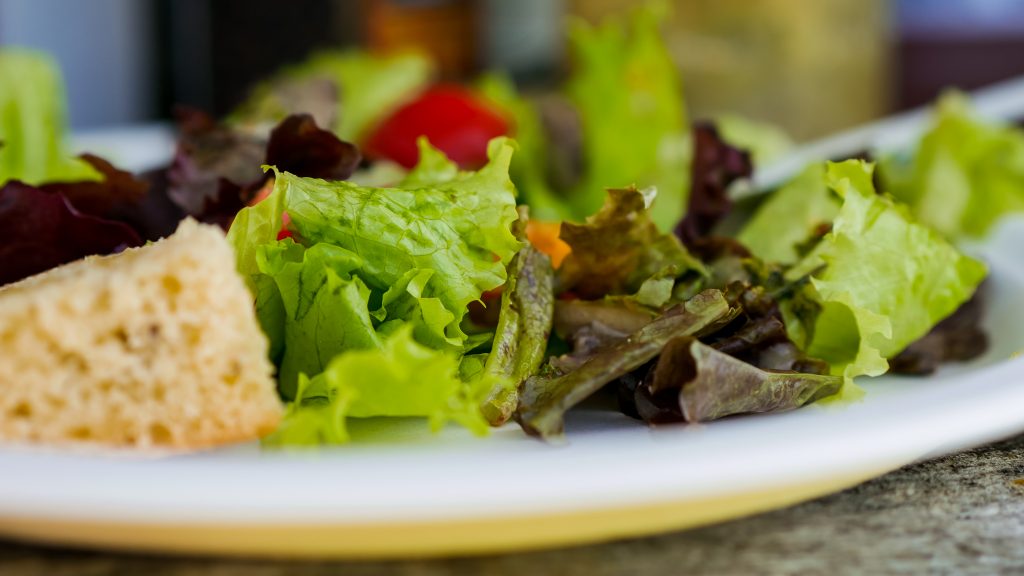
Detox The Liver
The liver removes many of the body’s major toxins and affects allergies. Martin Healy says that key ways to boost your liver function include cutting out alcohol, smoking, caffeine and embarking on a detox program.
A glass of water containing freshly squeezed lemon each morning will help. Antioxidants and vitamins found in fresh fruits and vegetables will reduce liver inflammation and boost immune function, while foods like brussels sprouts will increase the activity of important liver enzymes.
Herbs and Nutritional Supplements for Seasonal Allergies
These herbs and nutritional supplements are best taken on a daily basis. Taking them before allergy season even starts, can prevent symptoms altogether. They can also be used as needed.
- Stinging Nettle: Nettles are used as spring tonics and a general detoxifying remedy. In some cases of rheumatism and arthritis, nettles can be astoundingly successful. In childhood eczema nettles are a specific remedy and are beneficial in all the varieties of this condition especially in nervous eczema.
Nettles in high doses can have amazing results for allergy sufferers. It has been used for centuries to treat allergy symptoms – particularly hay fever – which is the most common allergy problem. It contains biologically active compounds that reduce inflammation. Dr. Andrew Wiel M.D. author of Natural Health/Natural Medicine says he knows of nothing more effective than nettle for allergy relief. This statement is backed up by studies at the National College of Naturopathic Medicine in Portland, Oregon. Decongestants, antihistamines, allergy shots and even prescription medications such as Allegra and Claritin treat only the symptoms of allergies and tend to lose effectiveness over a period of time. They can also cause drowsiness, dry sinuses, insomnia and high blood pressure. Nettle has none of these side effects. It can be used on a regular basis and has an impressive number of other benefits most notably as a treatment for prostate enlargement. Nettle is easily available in tea and tincture form, and also can be eaten like spinach in the spring, made into soups and smoothies. Nettles are prized for being highly nutritional.
- Raw Local Honey: Raw honey is great, but raw local honey is even better! Raw local honey contains pollen that is specific to your area and therefore can really help those local seasonal allergies. Taking a spoonful of raw honey once or twice a day is a great help. It is also advised to begin taking local honey a few months prior to the allergy season; this gets the pollen introduced into the body and gradually builds up the body’s tolerance to seasonal allergies. Honey is not recommended for babies under 12 months, due to infant botulism.
- Vitamin C: To assist with a malfunctioning immune system try lemon water and orange water (not juice – no sugar), cultured vegetables and strawberries.
- Quercetin: 500 mg daily (half that for kids). Quercetin is a plant pigment found in many common herbs and foods, and a very reliable anti-inflammatory nutritional supplement. It helps with gut repair, boosts the immunity in your mucus membranes reducing reactivity to seasonal allergens, and also helps reduce food allergies. There is conflicting data on whether it is safe in pregnancy, therefore I would not recommend it for those who are pregnant.
- Zinc: Take an age appropriate dose daily.
- Please visit your doctor when necessary!
Traditional Allergy Tincture Blend
- Nettle (Urtica dioica, spring tops) 0.30 ml
- Astragalus (Astragalus membranaceus, root) 0.25 ml
- Reishi (Ganoderma lucidum, thallus) 0.14 ml
- Schisandra (Schisandra chinensis, fruit) 0.14 ml
- Southern Prickly Ash (Zanthoxylum clava-herculis, bark) 0.07 ml
Keep an eye out for another blog full of Stinging Nettle Recipes soon!
Talking About Maple Syrup
Spring is on it's way...
My first experience with making maple syrup by myself was for my son’s science fair project on evaporation. That was over 25 years ago! I had as much fun as the boys. First, we tapped a couple of old sugar maples. Then waited anxiously for the sap to flow. When it was time to begin our experiment, we evaporated just enough sap to make syrup and then continued the evaporation process till we make Maple Candy, such a yummy experiment!
Believe it or not, but I personally go through a 4L jug of syrup per year! We LOVE it!
When is maple syrup tapping and harvesting season?
Maple sugar season in Ontario normally starts in the late winter and ends in the early spring. The sugar maple’s sap starts to flow after a hard freeze. The best time for maple sap collection is when nights are freezing cold and are followed by sunny and rather warm days that are between 40 and 50 degrees Fahrenheit. On days when these conditions are not reached, the flow of sap will be slow. When optimum conditions are reached, the sap will flow quickly, on these days, we should check often so that the buckets don’t run over! The entire sap collection season only lasts from three to four weeks. When the temperature remains above freezing, or when the maple trees begin to form buds, it’s time to stop collecting sap from the trees. If maple syrup is made from sap collected once buds have begun to form on the maple trees, the syrup will smell bad and have a poor flavor.
How long does maple syrup last?
Maple syrup never spoils! This is due to the high concentration of sugar in maple syrup. Maple syrup should be kept in the refrigerator once it’s opened to discourage mold from growing on the syrup. Should mold grow on maple syrup, it’s safe and easy to remove. Just scoop the mold off the top of the syrup with a spoon and discard the mold or strain the maple syrup into a clean container through a piece of cheesecloth. Maple syrup kept in a cold place such as a refrigerator is less likely to grow mold than maple syrup kept in a cupboard or other warm place.
How do you know when the maple syrup is done?
We have chosen to use a very simple method, the spoon test. Dip a spoon into the boiling sap and watch the sap drip back into the pan. If the sap still needs to boil more, the sap will fall off the spoon in separate droplets. When the syrup starts to run off the spoon in a sheet or a stream, then it’s almost done. It will also start to look more like syrup and less like sap at this point. If you think the syrup is done, take it off the fire and let it cool a bit. As it cools it should start to thicken if it has turned into syrup. If the syrup is still not thick enough it can be returned to the heat and boiled some more.
Which maple tree do you get syrup from?
There are three different species of maple that produce the kind of sap from which maple syrup is usually made, Sugar Maple (Acer saccharum), the Black Maple (Acer nigrum), and the Red Maple (Acer rubrum). These three species of maple have very high sugar contents in their sap. Red Maples offer a shorter sugar season because they tend to bud earlier than either Sugar or Black Maples. You can also tap the Manitoba Maple (Acer negrundo), the Silver Maple (Acer sacharinum), and the Bigleaf Maple (Acer macrophyllum). Birch and Black Walnut trees can be tapped for syrup. Next year I am going to try Black Walnut just for fun!
Does maple syrup have potassium in it?
One tablespoon of maple syrup contains 42 mg of potassium. Not only does maple syrup contain potassium, but it also contains calcium, zinc, manganese, magnesium, and iron. The darker the maple syrup, the more of these minerals it contains. Maple syrup also contains trace amounts of vitamins B1, B2, B5, B6, biotin and folic acid.

